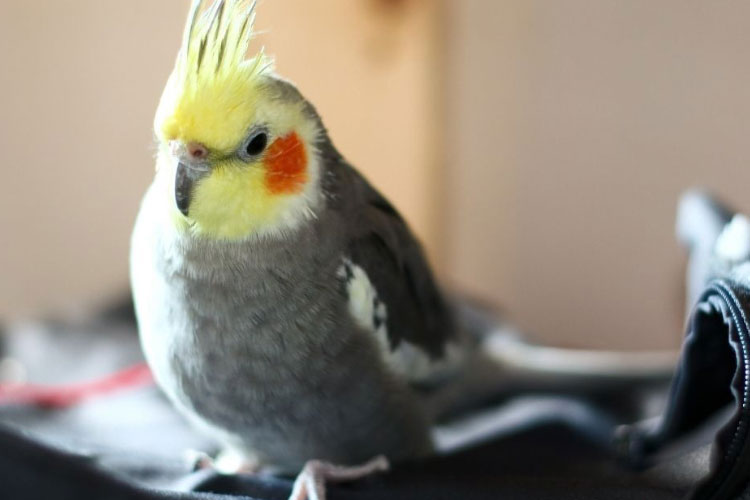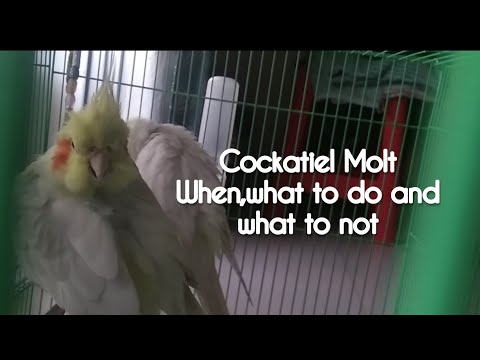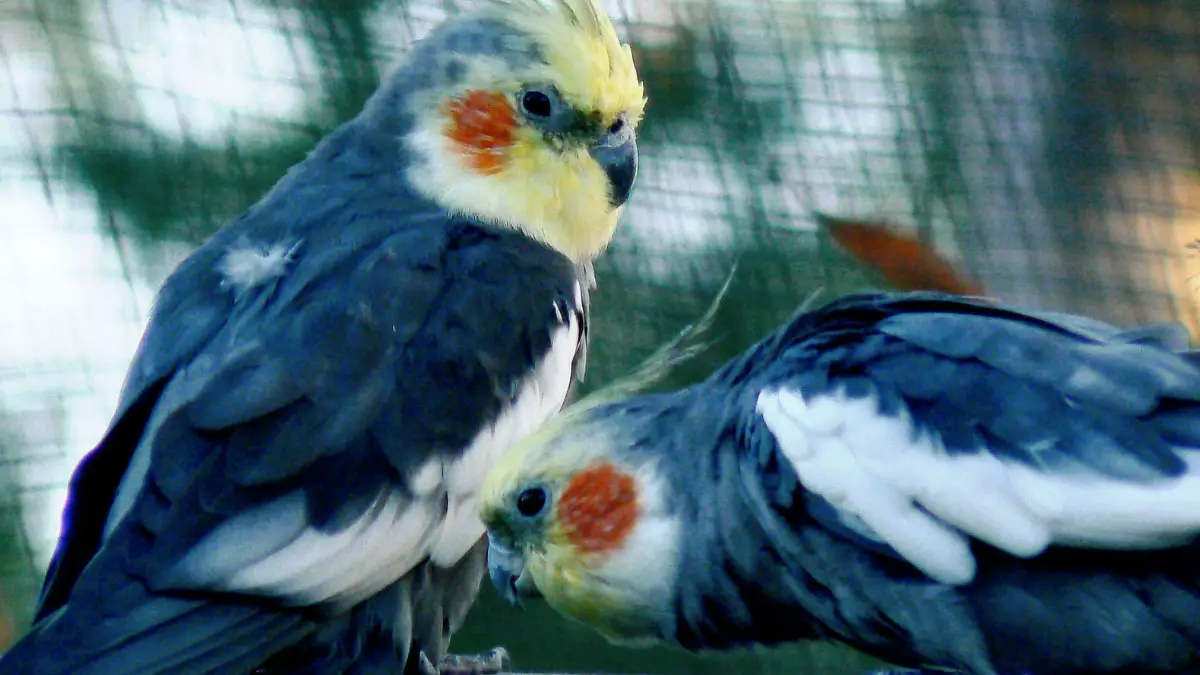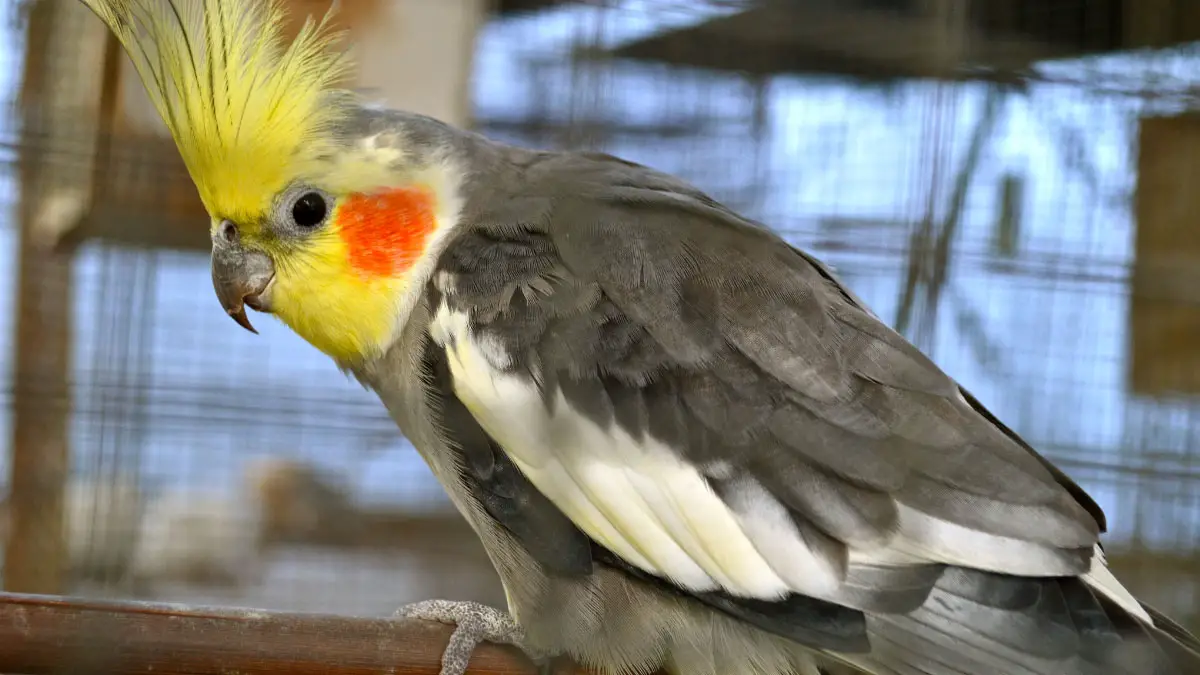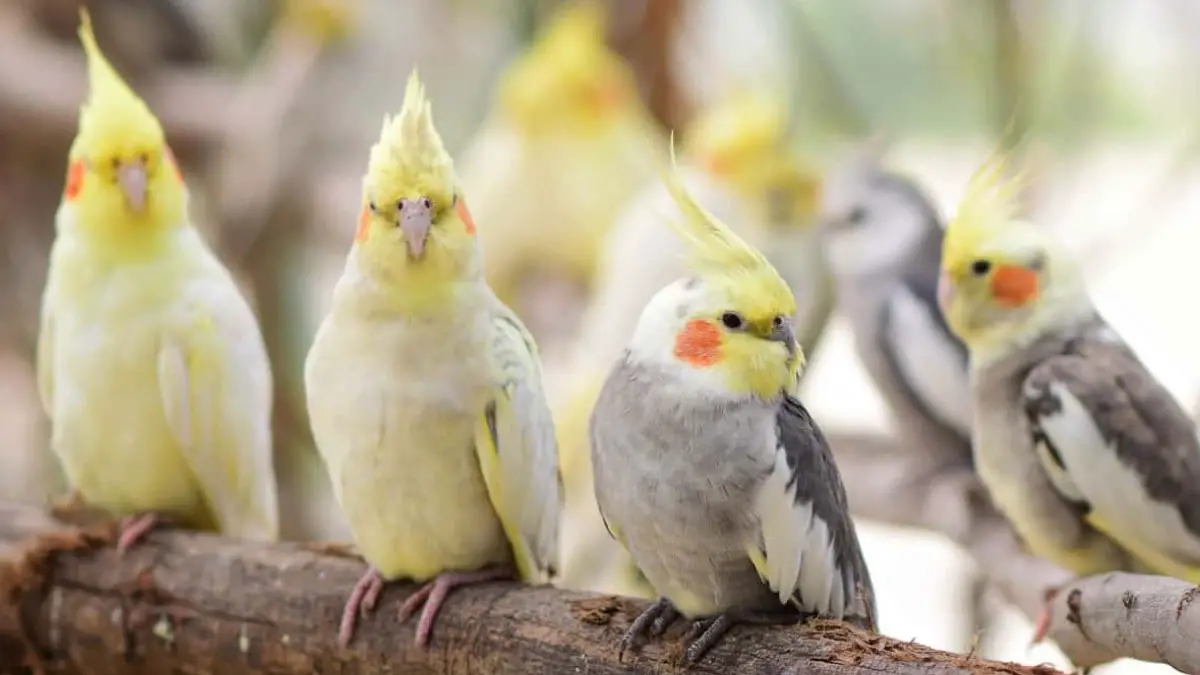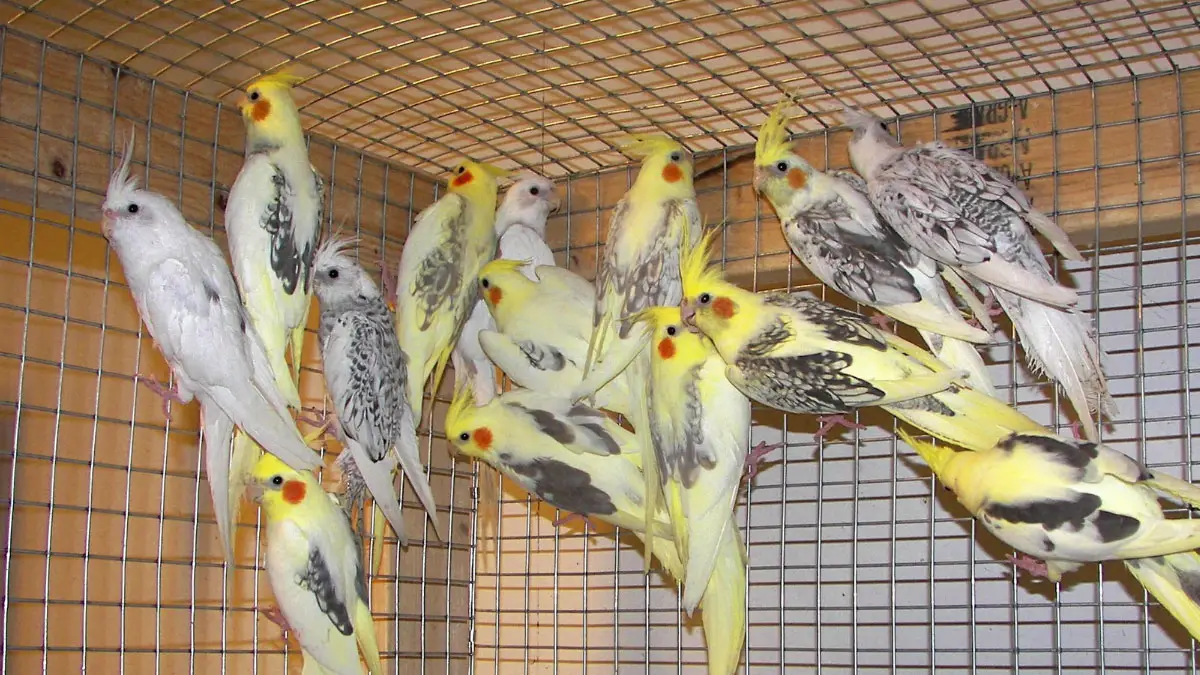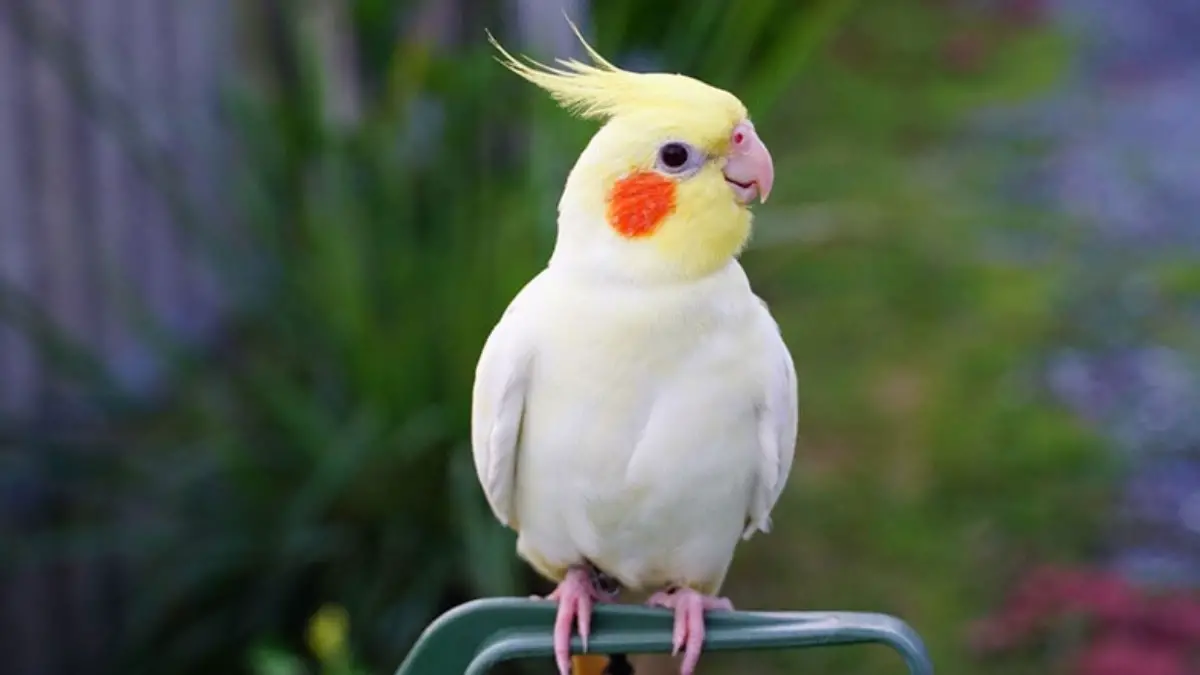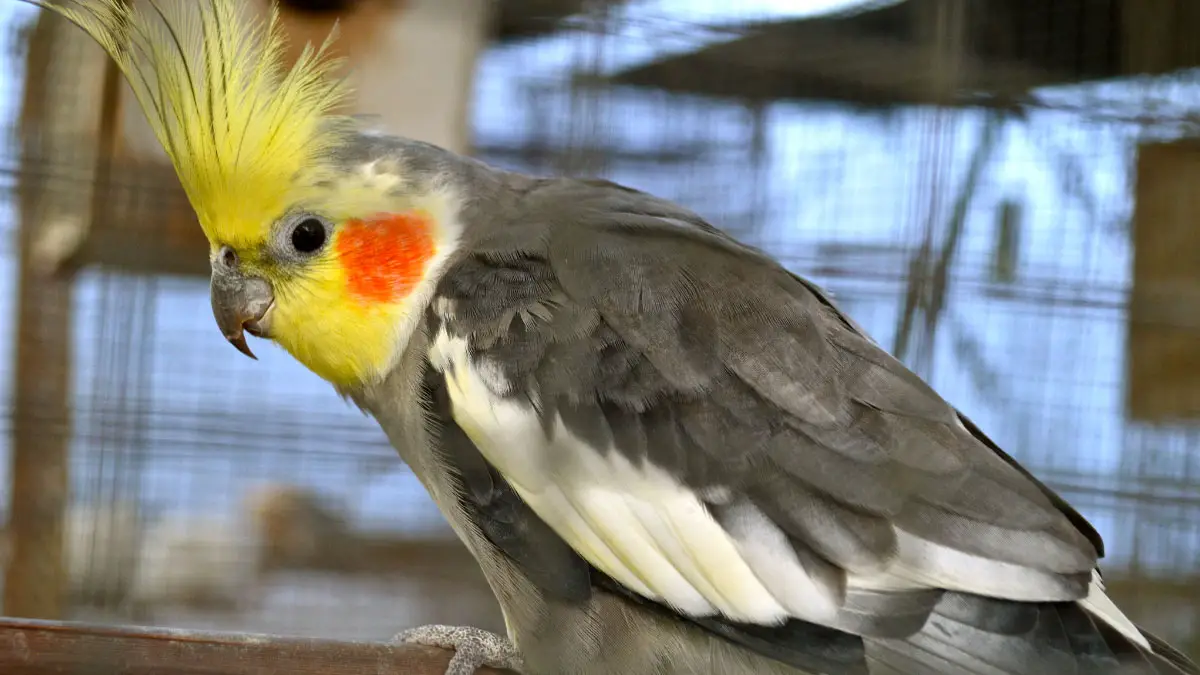If you have a pet cockatiel and notice that it has lost several of its feathers, don’t panic! This is a natural process known as molting, an essential aspect of their general growth.
When Do Cockatiels Molt? Cockatiels molt between 6-9 months of age. This procedure repeats twice every year, most frequently in the fall and spring seasons. Although it’s a natural process, it’s a pretty challenging time for your pet bird. Excessive sleep, feeling lonely or unsafe, losing interest in flying, and ripping out feathers are all core symptoms you can find while they are in the molting stage.
So you’ve to be extra caring to them during their molting period. If you want to know more about Cockatiels Molting: When Do Cockatiels Molt? What are the symptoms you will see while they molt? Then scroll down to continue reading.
When Do Cockatiels Molt?
Cockatiels molting depends on the weather. An adult cockatiel may start molting between 6-9 months old or sometimes 6-12 months old. Molting will be affected earlier in the year when the weather gets warm, but usually, it will molt in the spring or fall season.
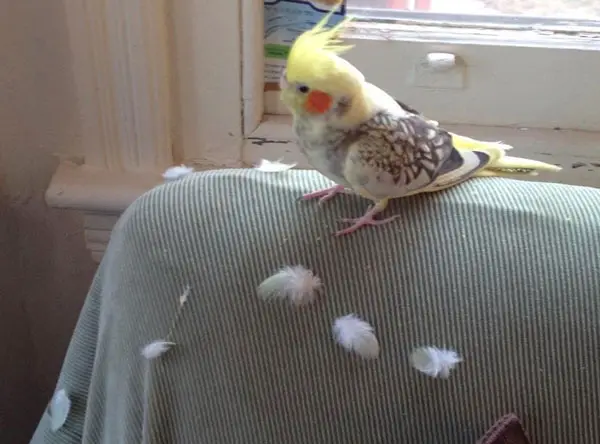
The entire molting process takes around 7 to 14 days to complete. Molting allows cockatiels to prepare a new feather coat for summer or winter. Warmer weather typically triggers molting. So you’ll they go through molting once in the spring and once in the fall when they take full advantage of their plumage and molt renewal to prepare for the winter.
You need to take better care of your tiel during the molting and should observe that it molts at regular intervals.
What Are Symptoms Of Cockatiels Molting?
Molting is a process that takes place in cockatiels for 7-14 days and never occurs entirely at once. When cockatiels molt, you will notice the following symptoms as they begin to change their behavior or biological activities.
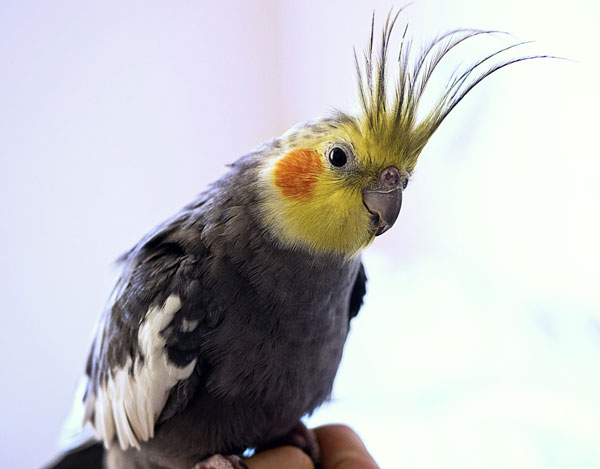
- Sleeps more than usual since they need lots of nutrition and energy to create new feathers
- Feathers and flakes are fallen everywhere
- Won’t sing as it usually does since molting is physically and mentally stressing
- Preening more often
- Frequently moves to darker and calmer locations, which is likely an attempt on its part to maintain its distance from you.
- Feel extremely itchy
- Rips and ruffles feathers with the beak
Your cockatiel will not feel safe in its molten state, even though it will usually be able to fly. So they need proper care during this time.
Keep in mind that the molting process should take place 1-2 times a year. Typically in the changeover season. If it appears to be shedding feathers in an inconsistent pattern, it is most likely self-mutilation instead of molting, which is something to worry about.
Also, look for abnormal molting symptoms like bald patches or partial molting, which are not a part of the healthy molting process. In such cases, you might need to take them to the vet.
How Long Does A Cockatiel Molt Last?
The entire process: from the start of feather loss to the finished product, replacing a coat with new feathers and a fully grown cockatiel can take roughly 10 weeks. It will rely significantly on the particular bird and, once more, the area’s environment.
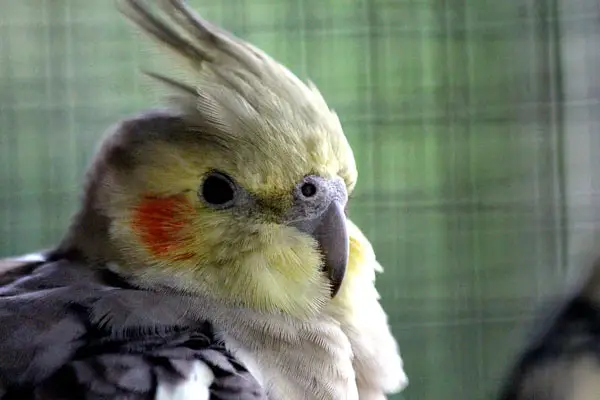
However, you should anticipate that it will last at least seven weeks and most likely ten at the very most. It may be longer in certain circumstances, but only in some. Keep an eye on the entire process to ensure that everything goes correctly and that your bird gets all of its feathers restored healthily.
What Should You Do If Your Pet Cockatiel Molts?
When it is molting, your cockatiel might not interact much with you. You should accept if they want to stay alone while feeling worn out, scratchy, or insecure. The good news is that you still have options for giving your cockatiel new feathers. Therefore, the following are the steps you should take while your pet cockatiel is molting:
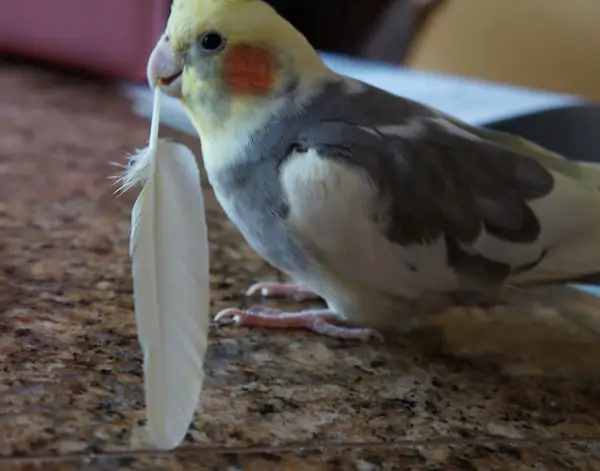
Scratching your cockatiels head
Your cockatiel is excellent at maintaining its feathers except for its neck and head. Only its legs can scrape them since its beak cannot reach them. You can help him with soft scratching if the bird permits it. It relieves itching and aids in the loosening of keratin sheaths.
Create a nutritious diet
You should maintain proper nourishment. Because feather formation requires a lot of calcium, calcium blocks should provide abundant food and water. Good veggies and fruits, fresh pellets and seeds, are available. You can also feed egg whites which are a good source of protein and calcium, but it’s unnecessary to add to the diet chart.
Keep the cage warm
The bird cage doesn’t need to be heated, but it is a good idea to keep it warm to keep the birds from getting cold. Your bird does not have all its feathers and must maintain a high body temperature! The cage should be removed from any windows or air conditioning equipment that produces a strong draft.
Gently bathe them
Even though your cockatiel often avoids bathing, the molting season can be an exception. Try to bathe your pet cockatiel by filling a dish with water or misting them with a spray bottle.
Provide a safe shelter
Your cockatiel may engage in undesired nesting behavior if you conceal hutches and nests, but you can also make him feel safer and less stressed while he is molting. Try placing a cloth over one of the cage’s corners, and keep direct sunlight out of the cage.
You can watch the following video to learn better about the molting process for cockatiels;
Can A Four-Month-Old Cockatiel Molt?
4 months old cockatiels are too young to start molting, and if your pet looks molting at four months, it may be a little older than you believe. Speak with the breeder once more to establish the cockatiel’s age, or examine the feathers again to see if they are broken, divided, or fully developed.
Ensure they are molting appropriately and without hurting themselves. This is because young birds are more likely to exhibit behavioral issues than mature birds. So, although molting is a regular feature of your cockatiel’s yearly existence, you should watch it when it occurs.
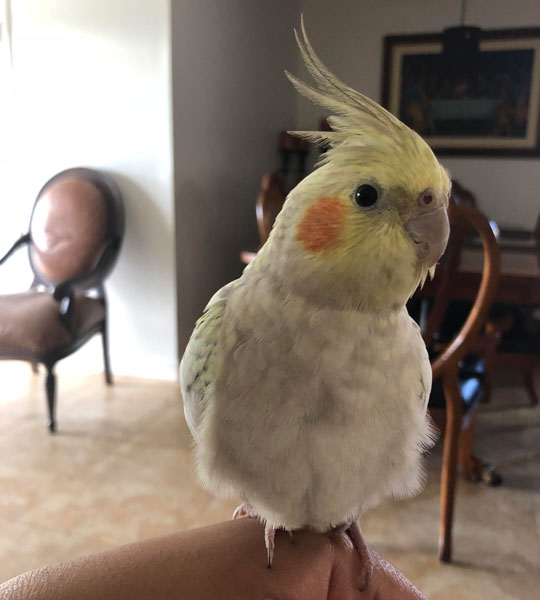
Numerous unpleasant behaviors might be misinterpreted as meltdowns and can worsen if not addressed. However, if you fulfill all of your cockatiel’s demands and take proper care of them, they should molt typically one to two times a year starting at the age of six months.
What Causes Cockatiels To Molt?
Cockatiels have dull plumage as they hatch, and their feathers look brighter after they have grown back; this is one of the best ways they think to attract a partner. Molting regularly also aids in the maintenance of their feathers, allowing them to fly large distances and safeguard themselves from threats.
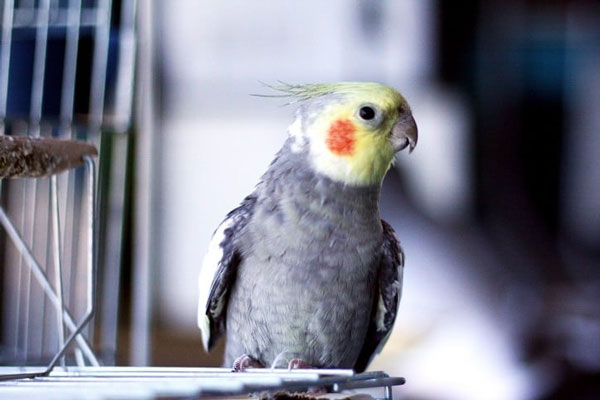
Is It Painful For The Cockatiels To Molt?
Birds do not experience any discomfort throughout the process of molting; nonetheless, around this time of year, they are more likely to feel anxious and irritable than usual. Your pet bird will experience considerable scratching as its feathers regrow, and it may benefit from a mist bath to help them shed any dead skin.
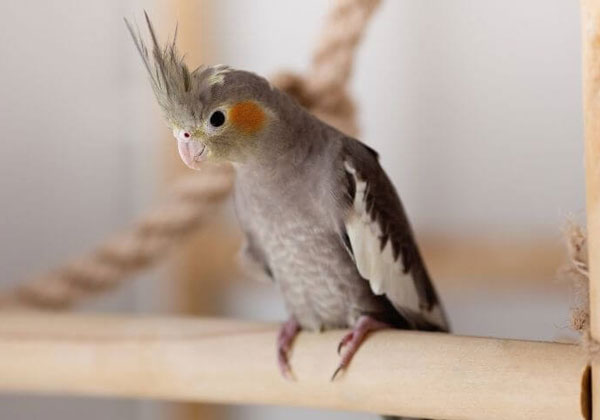
FAQs
Cockatiel molting is not a mystery, but so many things are essential for you to know if you have a pet cockatiel in your home. To know more about cockatiels’ behavior, you can look over some additional questions we have answered below;
Molting is an animal (generally birds) behavior wherein they lose their feathers, hair, and skin as a natural process at a specific time of year for new feathers, hair, or skin to grow.
Molting depletes their resources, and they can be grumpy as a result. While the pin feathers are growing in, they can be painful.
When a bird is scared or under stress while its feathers are about to molt, the feathers can fall out rapidly, leaving bare areas before the new feathers have an opportunity to grow in.
Final Words
Cockatiels molting is a natural and necessary process of the growth of your cockatiel, and it is not typically something to be concerned about. However, in certain circumstances, the shedding of feathers might be abnormal and indicate an underlying health concern.
Therefore, ensure that you keep a close eye on your bird to check for any other disease symptoms and ensure that it is healthy.
